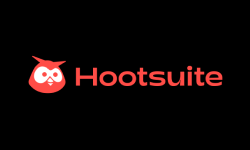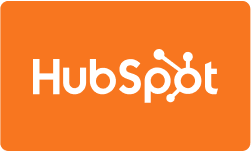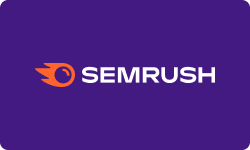Performance at Glance
Google Ads is one of the most popular and effective advertising platforms. It offers a pay-per-click model that enables businesses to reach a targeted audience and track their ad’s performance in real-time. The following table takes a closer look at the performance of Google Ads and rates it on parameters like features, ease of use, support, and overall value for money.
| | |
| | Easy to use, even for beginners. |
| | Excellent customer support for troubleshooting and guidance. |
| | Good, but not as comprehensive as some other advertising platforms. |
| | A high-quality platform with robust features and functionality. |
| | With its pay-per-click model, Google Ads offers excellent value for money. |
| | Highly rated by users for its ease of use, support, and overall quality. |
Features of Google Ads
Google Ads is a powerful online advertising platform that can help businesses reach their target audience. In this section, we’ll explore some of its most important features and how to use them effectively.
Google Ads is a powerful advertising platform that offers a wide range of features for advertisers to create and manage campaigns across multiple channels. The key features include:
Multiple Ad Types
- Basic ad types (text, image, WAP mobile): Google Ads offers a variety of basic ad types that advertisers can choose from based on their marketing goals. These include text ads, image ads, and WAP mobile ads.
- Display Ad Builder ads: Display Ad Builder allows advertisers to create custom display ads using templates and images.
- Dynamic Search Ads: Dynamic Search Ads automatically generate ad headlines and landing pages based on website content.
- Product Shopping ads: Product Shopping ads showcase products directly within search results.
- Video ads: Video ads appear before or during online video content and can be skippable or non-skippable.
- Call-only ads: Call-only ads allow advertisers to create ads that prompt users to call their business directly from the ad.
- Ads using ad parameters: Ad parameters allow advertisers to dynamically insert values such as keywords or locations into ad text.
- Shared creatives: Shared creatives allow advertisers to create and share ad assets across multiple campaigns.
Campaign Settings
- Campaign types: Google Ads offers several types of campaigns, including search, display, video, shopping, and app campaigns.
- Shared budgets: Shared budgets allow advertisers to allocate a single budget across multiple campaigns.
- Ad scheduling: Ad scheduling allows advertisers to specify the days and times when their ads will appear.
Bid Settings
- Portfolio bid strategies: Portfolio bid strategies allow advertisers to set bids across multiple campaigns with a single strategy.
- Basic bidding options: Basic bidding options include manual CPC, automatic CPC, and target CPA.
- Enhanced CPC: Enhanced CPC automatically adjusts bids based on the likelihood of a conversion.
- Target ROAS: Target ROAS allows advertisers to set bids based on the expected return on ad spend.
- Maximize clicks: Maximize clicks automatically sets bids to get the most clicks within a budget.
Ad Targeting
- Demographic targeting: Demographic targeting allows advertisers to target users based on age, gender, and parental status.
- Topic targeting: Topic targeting allows advertisers to target their ads to specific topics, such as sports or travel.
- Audiences: Audiences allow advertisers to target users based on their interests and behaviors.
- Device targeting: Device targeting allows advertisers to target specific types of devices, such as desktop or mobile.
- Publisher-defined placements: Publisher-defined placements allow advertisers to target specific websites or apps.
- Exclusions from the site and category exclusion tool: Exclusions allow advertisers to prevent their ads from appearing on certain websites or in certain categories.
- Display targeting optimization: Display targeting optimization uses machine learning to optimize ad targeting.
- Mobile app placements: Mobile app placements allow advertisers to target specific mobile apps.
- Mobile interest categories: Mobile interest categories allow advertisers to target users based on their interests.
Other Features
- Sitelinks: Sitelinks allow advertisers to include additional links in their ads.
- Upgraded URLs: Upgraded URLs allow advertisers to manage their website URLs separately from their tracking parameters.
- Labels: Labels allow advertisers to organize their campaigns and ad groups.
- Location assets: Location assets allow advertisers to specify locations for their ads.
- Promotion assets: Promotion assets allow advertisers to create promotional messages for their ads.
- Price assets: Price assets allow advertisers to include pricing information in their ads.
How to Structure Your Google Ads Account?
The structure of your Google Ads account plays a critical role in determining the digital marketing tool effectiveness and efficiency of your advertising campaigns. A well-structured account allows you to target your ads more effectively, improve your ad relevance, and ultimately increase your return on investment (ROI). So, here is a step-by-step guide on how to structure your Google Ads account for optimal results.
Set Your Campaign Objectives
The first step in structuring your Google Ads account is to determine your campaign objectives. This will help you to create campaigns that are tailored to your specific marketing goals. For example, if you want to drive website traffic, you may create a search or display campaign. Alternatively, if you want to promote a new product or service, you may create a shopping campaign.
Create Campaigns Based on Objectives
Once you have set your campaign objectives, the next step is to create campaigns within your Google Ads account. Each campaign should be centered around a specific product or service and aligned with your marketing goals. It is important to create separate campaigns for each objective to ensure that your budget is being allocated effectively.
Divide Your Campaigns into Ad Groups
Within each campaign, you will need to create ad groups. These ad groups should be organized around specific themes or categories related to your product or service. For example, if you are advertising shoes, you may have ad groups for different types of shoes, such as sports shoes, casual shoes, and formal shoes.
Choose Relevant Keywords
Once you have created your ad groups, the next step is to choose relevant keywords for each ad group. These keywords should be aligned with your ad group themes and be highly relevant to your product or service. Choose keywords that have high search volume and low competition, as this will increase the likelihood of your ads being shown to the right audience.
Create Compelling Ad Text
After selecting your keywords, it is time to create compelling ad text that incorporates those keywords. The ad text should be attention-grabbing and informative and clearly convey the benefits of your product or service. Make sure to use calls-to-action that encourage users to click on your ad.
Link Your Ads to Relevant Landing Pages
When users click on your ads, they should be directed to a relevant landing page that is aligned with their search query. Ensure that your landing pages are high-quality, informative, and provide a clear call-to-action. Your landing pages should be optimized for conversions, and the user experience should be smooth and seamless.
Set Budgets for Each Campaign
It is important to set budgets for each campaign to control your ad spend and ensure that you are getting the most value for your investment. You can set daily or monthly budgets for each campaign, depending on your goals and budget. This will help you to stay within your budget and maximize your return on investment.
Set Bids for Your Keywords
In addition to setting budgets, you will need to set bids for your keywords. Bidding is the process of setting the maximum amount that you are willing to pay for a click on your ad. You can set bids manually or use automated bidding strategies, depending on your objectives and budget.
Monitor and Optimize Performance
Finally, it is essential to monitor and optimize your campaign performance regularly. You should regularly review your campaigns to ensure that they are performing effectively and make adjustments as needed to improve your ROI. This can include adjusting bids, refining ad text, and tweaking landing pages.
Google Ads Bidding Strategies
One of the most critical aspects of running successful advertising campaigns on Google Ads is choosing the right bidding strategy. A bidding strategy determines how much you are willing to pay for each click or impression on your ads, and ultimately impacts the overall success of your campaign. So, here are some of the most common bidding strategies used in Google Ads.
Target CPA (Cost Per Acquisition)
Target CPA is a bidding strategy that automatically sets your bids to help you achieve your desired cost per acquisition. You set a target CPA, and Google Ads automatically adjusts your bids to get as many conversions as possible at that cost. This strategy works best when you have a clear idea of the maximum amount you are willing to pay for each conversion.
Target ROAS (Return On Ad Spend)
Target ROAS is a bidding strategy that aims to maximize your revenue based on a specific return on ad spend (ROAS) target. With Target ROAS, Google Ads automatically sets your bids to maximize your conversion value while maintaining your target ROAS. This strategy works best when you have a clear idea of your desired ROAs and can accurately track the revenue generated by your ads.
Maximize Conversions
Maximize Conversions is a bidding strategy that automatically sets your bids to get as many conversions as possible within your budget. With this strategy, Google Ads automatically adjusts your bids to get the most conversions possible while staying within your budget. This strategy works best when you have a fixed budget and want to get as many conversions as possible.
Enhanced Cost Per Click (ECPC)
ECPC is a bidding strategy that automatically adjusts your bids for clicks that are more likely to result in a conversion. With ECPC, Google Ads automatically adjusts your bids for clicks that are more likely to result in a conversion, while maintaining your average cost per click (CPC). This strategy works best when you want to maximize your conversion rate without significantly increasing your CPC.
Maximize Clicks
Maximize Clicks is a bidding strategy that automatically sets your bids to get as many clicks as possible within your budget. With this strategy, Google Ads automatically adjusts your bids to get the most clicks possible while staying within your budget. This strategy works best when you have a fixed budget and want to get as many clicks as possible.
Manual CPC Bidding
Manual CPC Bidding is a bidding strategy that allows you to manually set your maximum bid for each keyword. With this strategy, you have full control over how much you are willing to pay for each click. This strategy works best when you want complete control over your bids and are willing to invest the time needed to manage your campaigns manually.
tCPM Bidding (Cost Per Thousand Impressions)
tCPM Bidding is a bidding strategy that allows you to bid for every thousand impressions your ad receives. With this strategy, you pay for every thousand impressions, regardless of whether or not the user clicks on your ad. This strategy works best when you want to increase brand awareness or have a limited budget.
vCPM Bidding (Cost Per Viewable Thousand Impressions)
vCPM Bidding is a bidding strategy that allows you to bid for every thousand viewable impressions your ad receives. With this strategy, you only pay for impressions that are viewable on the user’s screen for a minimum amount of time. This strategy works best when you want to increase brand awareness and ensure that your ads are being seen by your target audience.
CPV Bidding (Cost Per View)
CPV Bidding is a bidding strategy that allows you to bid for every view your video ad receives. With this strategy, you only pay when someone views your video ad. This strategy works best when you are running video ads and want to pay only for views, rather than clicks.
Target Impression Share Bidding
Target Impression Share Bidding is a bidding strategy that allows you to set a target impression share percentage for your ads. With this strategy, Google Ads automatically sets your bids to help you achieve your desired impression share percentage. This strategy works best when you want to increase the visibility of your ads and ensure that they appear in a specific percentage of ad slots.
Top Google Ads Alternatives
In today’s digital world, advertising on various online platforms has become a crucial aspect of business growth. Google Ads has been the most popular advertising platform for many years, but it’s not the only option available.
In this section, we will compare the top Google Ads alternatives, including Facebook Ads, Microsoft Ads, LinkedIn Ads, and Quora Ads.
| | |
| | Text, Display, Video, Shopping |
| | Image, Video, Carousel, Collection, Instant Experience |
| | |
| | Text, Image, Video, Carousel, Sponsored InMail, Dynamic Ads |
| | Text, Image, Promoted Answers |
Facebook Ads
Facebook Ads is an advertising platform run by Facebook, which allows businesses to create and display ads to Facebook’s user base. With Facebook Ads, businesses can target users based on their demographics, interests, behaviors, and more. The platform offers a range of ad formats, including image, video, carousel, and more. Facebook Ads also provides detailed analytics and reporting to help businesses measure the success of their campaigns.
Microsoft Ads
Microsoft Ads, formerly known as Bing Ads, is a pay-per-click advertising platform run by Microsoft, which allows businesses to display ads on the Bing search engine, as well as other partner websites. With Microsoft Ads, businesses can target users based on their search queries, demographics, location, and more. The platform offers a range of ad formats, including text, image, and video ads. Microsoft Ads also provides detailed analytics and reporting to help businesses measure the success of their campaigns.
LinkedIn Ads
LinkedIn Ads is an advertising platform run by LinkedIn, which allows businesses to create and display ads to LinkedIn’s user base. With LinkedIn Ads, businesses can target users based on their job title, industry, company size, and more. The platform offers a range of ad formats, including sponsored content, sponsored InMail, and display ads. LinkedIn Ads also provides detailed analytics and reporting to help businesses measure the success of their campaigns.
Quora Ads
Quora Ads is an advertising platform run by Quora, which allows businesses to display ads on the Quora question-and-answer platform. With Quora Ads, businesses can target users based on their interests, location, device type, and more. The platform offers a range of ad formats, including text, image, and video ads. Quora Ads also provides detailed analytics and reporting to help businesses measure the success of their campaigns.
Each of these platforms offers unique features and benefits, and the best choice for your business will depend on your specific goals and target audience. When comparing these platforms to Google Ads, it’s important to consider factors like audience targeting, ad formats, and analytics and reporting capabilities.
Conclusion
Google Ads stands as a powerful and effective online advertising platform. With its vast reach and targeting capabilities, it enables businesses to reach their target audience with precision and generate measurable results. The platform’s user-friendly interface, comprehensive campaign management tools, and robust analytics provide valuable insights for optimizing ad performance. Google Ads’ continuous innovation and updates ensure advertisers have access to the latest features and opportunities. Overall, Google Ads proves to be an invaluable tool for businesses looking to maximize their online advertising efforts and achieve their marketing objectives.
Frequently Asked Questions
How does Google Ads work?
Google Ads allows businesses to create and display ads to potential customers based on factors, such as search terms, geographic location, and demographics. Businesses set a budget and bid on specific keywords, and pay each time a user clicks on their ad.
Are Google Ads worth it?
Yes, Google Ads can be a highly effective advertising platform for businesses of all sizes, but the success of campaigns depends on factors like the quality of the ad, the competitiveness of the target keywords, and the targeting strategies.
Can I run Google Ads for free?
No, Google Ads operates on a pay-per-click model, meaning that businesses only pay when a user clicks on their ad.
Is $500 enough for Google Ads?
The effectiveness of a Google Ads campaign depends on many factors, including the competitiveness of the target keywords, the targeting strategies, and the quality of the ad. While $500 can be enough to run a successful campaign, it may not be sufficient for highly competitive keywords or large-scale campaigns.
What is the $10 Google Ads budget?
The $10 Google Ads budget refers to the minimum daily budget required to run a Starter campaign, which operates on a pay-per-click model.
How much is the minimum daily budget for Google Ads?
The minimum daily budget for a Google Ads campaign is $1, although the effectiveness of the campaign may be limited at this budget level.

![Unlocking Ahrefs Premium: Get Ahrefs Premium Accounts [100% Free]](https://s44815.pcdn.co/wp-content/uploads/2023/10/Ahrefs-Free-Premium-accounts-2023-330x250.webp)




















